Often in zoos, we notice old-world monkeys whose noses are not flat like the new-world ones who consume bananas. But what does this new world squirrel monkey consume in their diet? Have you ever thought about it?
Well, if not. I am here to answer you. Squirrel monkeys are omnivores and consume insects too while foraging for their food. However, the baby squirrel monkey’s diet slightly varies from the adult ones. They consume more mother’s milk and mashed kinds of foods in the initial days.
Let’s break down the food and dietary sections of squirrel monkeys and learn what they have for us to learn –
What Does a Baby Squirrel Monkey Eat?
Just like many other animals, the diet of the baby squirrel monkey is different from the adult ones. Basically, in the first few days, they completely depend on their mother’s milk for nutrition.
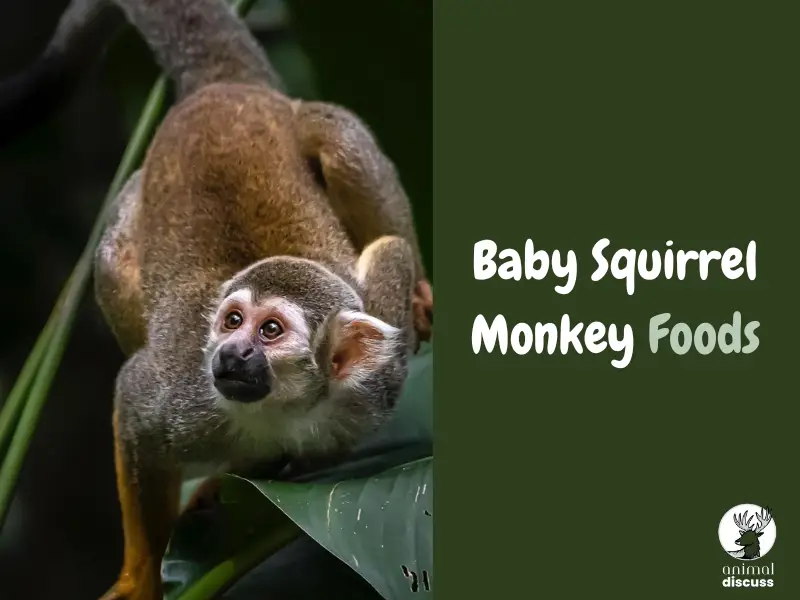
This initial day’s milk gives them the energy to properly grow and develop. During these days their diet will consume more softer and easier-to-digest forms which the adult squirrel monkey eats. It includes –
- Mashed fruits: Soft fruits that work well mashed include mango, papaya, and bananas.
- Bugs: As a source of protein, mealworms, crickets, and other tiny bugs can be rather tasty for them.
- Yogurt: Plain yogurt is a great source of calcium and beneficial bacteria.
- Monkey chow: This specially prepared chow can provide your monkey pet with essential nutrients that may be lacking in other types of diet.
As time passes by when they are 3-4 months old and start to wean, they depend on more solid food than liquid ones.
If you are interested in learning more about the squirrel monkeys, you may read my article.
What Does an Adult Squirrel Monkey Eat?
Most monkeys are omnivores and squirrel monkeys are no exception. Meaning they consume a diet that consists of both plants and animals.
Well, it might vary slightly depending on some factors such as species, season and habitat. Such as during the wet season when fruits are produced in huge quantities, they fulfill a major part of their diet. For example, ripe fruits like figs, guava, berries, mangoes, bananas, etc.
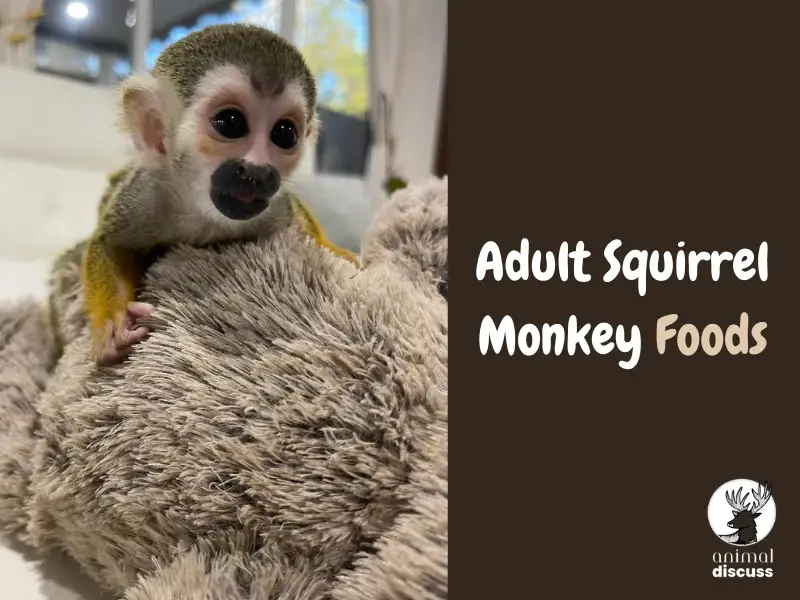
Other than these, they consume insects too. Such as grasshoppers, spiders, and caterpillars.
As I have already mentioned their diet includes plant-based food too, they consume leaves, nectar, flowers and even nuts from trees.
One more additional thing to their eating habit is they eat small animals. Like lizards, frogs, etc.
How Do Squirrel Monkeys Forage for Their Food?
Instead of hunting, squirrel monkeys mostly rely on foraging. They avoid going after the prey rather they are in favor of gathering easily accessible food. However, their approaches vary according to the type of food they desire.
The flexibility of their claws and fingers allows them to swiftly and readily snag insects.
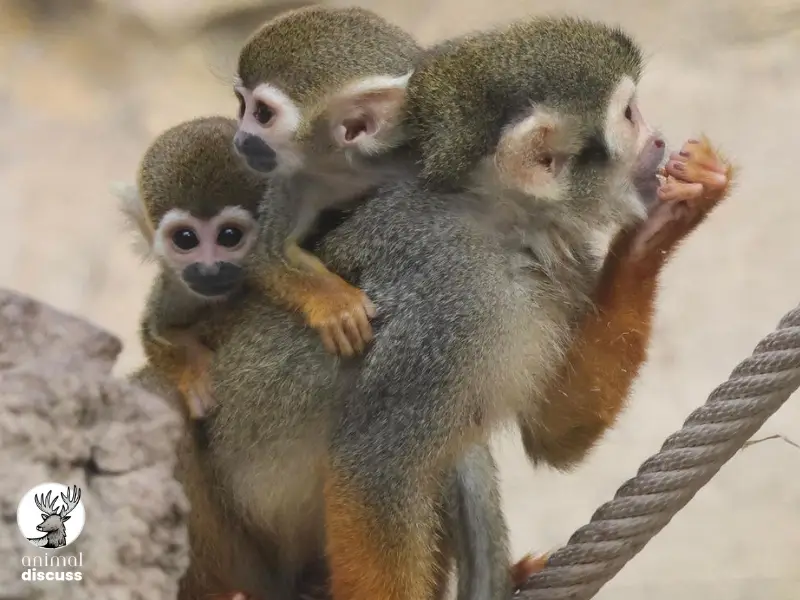
Additionally, their method of foraging includes using their fingertips to dig in gaps and under bark and leaves. They do utilize branches and other objects to discover hidden food sources. Now, let’s have a look at some foraging strategies they apply.
Catching techniques for fruits
In the case of eating fruit, their vision plays a key role. As ripe fruits can be seen by these clever monkeys even in dense foliage, thanks to their excellent vision.
Moreover, their acrobatic maneuvers allow them to access fruits that appear inaccessible. Even more interestingly, monkeys will occasionally band together to reach fruit. One monkey rattles a branch while the others wait below to catch the food that falls.
Other than fruits, finding bugs in moving or noisy positions in leaves and bark is a matter of cup of tea for squirrel monkeys. Because of their keen vision and hearing.
Small animals
While roaming around in search of food, squirrel monkeys attempt to capture eggs, frogs, or snakes that they come across. For this, a rapid attack, aided by their agile movement of the feet, is their technique to kill the prey.
Apart from that, when they work in groups, they catch more small animals. That’s why they live in groups while collecting food for themselves.
A couple of key points to remember while they do foraging:
- They avoid hunting larger creatures due to their fragility and smaller size
- Physical abilities including speed, vision, and flexibility are crucial for their survival
- Their ability to locate and access food sources relies heavily on the cooperation of their social groups
How Do Environmental Factors Help Squirrel Monkey Forage for Food?
Although squirrel monkeys’ primary mode of subsistence is foraging, there are a number of environmental factors to help them. Such as –
Seasonality of Fruits
We all know that in different seasons different fruits are seen. So, the quantity and variety of fruits available vary throughout the year. That’s why when squirrel monkeys have patterns in the food they eat, they adjust their foraging techniques accordingly.
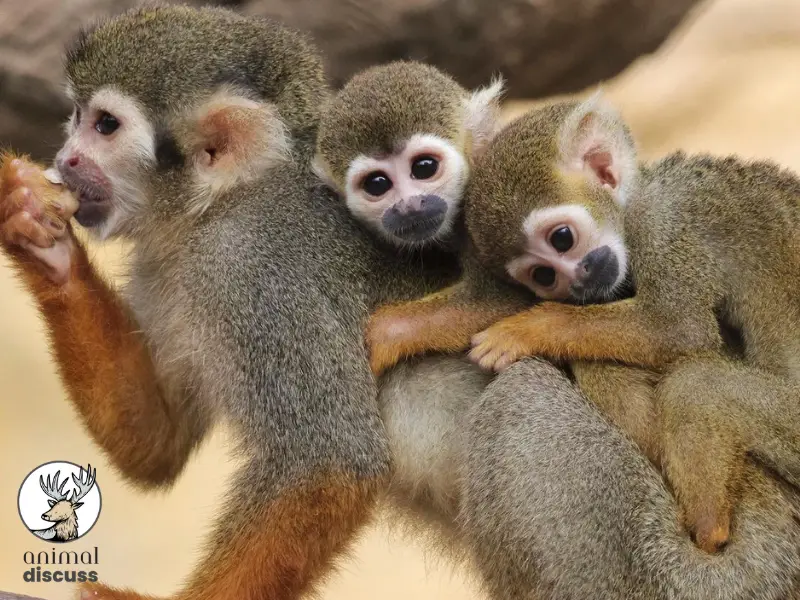
Moreover, they can prioritize the easy fruits when there are plenty of juicy ones.
Looking for insects
We know that insects of various sorts have preferred habitats within the forest. For this, the squirrel monkeys try directly to give foraging efforts toward those areas they know to be rich in insects. Such as sun-dappled patches or moist leaf litter.
As there are diversities in plants, different animals are drawn towards it. And monkeys can figure that out for themselves.
For instance, where there are growing plants or termites under old logs, insects like grasshoppers are mostly seen. You will notice that squirrel monkeys find those pinpoint areas to target them.
Humidity and temperature
Upon these two aspects, insect activities depend too. Following their characteristics, squirrel monkeys swift their foraging behavior. So, they can take advantage of insects.
That’s why they target more warm and wet weather where more and more insects remain active and roam around too.
Targeting small animals
Monkeys can narrow their search for potential hunting sites. By familiarizing themselves with the hiding spots of tiny animals, such as under rocks, in shrubs, or near bodies of water.
Most importantly, squirrel monkeys have a remarkable ability to detect the visual and auditory cues left by other creatures. Indicators of potential food sources include the sound of a lizard’s movement or the sight of frog droppings.
So, when monkeys go hunting, they utilize their natural habitat as a makeshift cover, so they don’t stand out. Because of their camouflage ability, they can blend in with downed trees or thick vegetation while they monitor their prey.
Seasonal Availability of Food for Squirrel Monkey
Since squirrel monkeys are omnivores, their diet undergoes significant seasonal changes in response to changes in food availability. The most important distinctions are listed below:
Season of Plenty foods – Wet Weather
During this season, fresh fruits are available. Plus, fruits, which make up the bulk of their diet, are at their peak right now. They subsist mostly on fruits such as bananas, figs, guavas, berries, and mangoes.
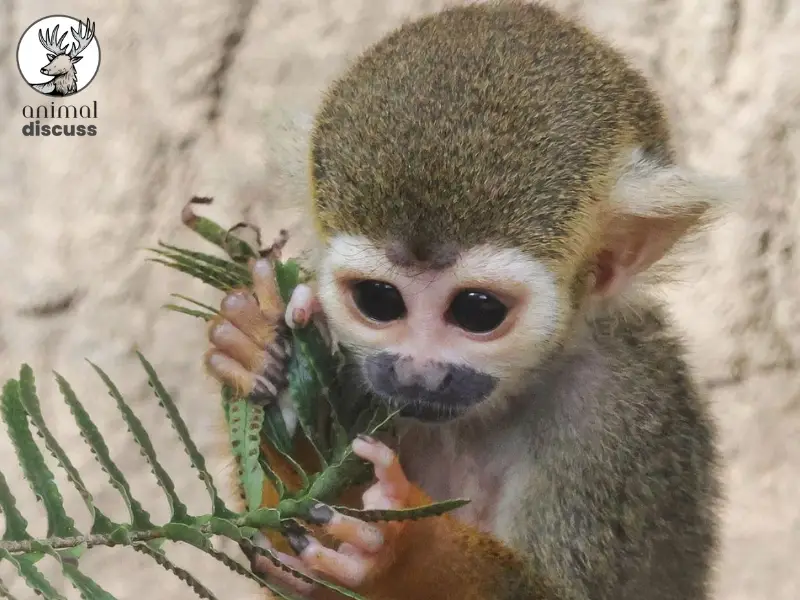
In terms of consuming insects, squirrel monkeys with their lightning-fast reflexes and keen vision, prey on grasshoppers, beetles, spiders, crickets, and worms.
During this wet season, they are also seen consuming fresh leaves, flowers, etc.
Scarcity of food – Dry season
It is quite unbelievable that in all seasons, there will be availability of their desired food, right? So, what do they do during that time?
Talking about fruits, since there aren’t a lot of fruits to choose from, they have to go with the least appealing or most difficult ones. They try to dig for fruits that are not easily reachable with sticks.
However, monkeys will consume more leaves, flowers, and bark when there is scarcity in the dry season. And, due to their small size, squirrel monkeys encounter fewer prey items when going on hunts for small creatures, such as lizards, frogs, and eggs.
How Do Squirrel Monkeys Adapt to the Seasons with Food Scarcity?
I have tried to show you a vivid scenario of how a squirrel monkey survives and what helps them to adapt during that challenging time. Let’s see –
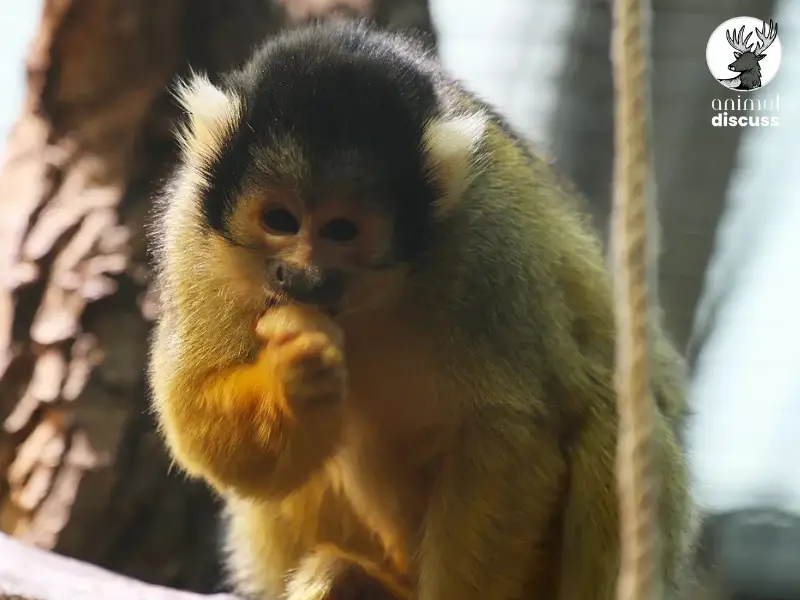
- Dietary flexibility: As not all fruits are present all the time, the swift changes and adaptation towards it are quite important for their survival.
- Group cooperation: Squirrel monkeys are social. So, when they work together to locate and access food, it becomes easier for them too.
- Learning tactics: Based on their past experiences, they try to remember their fruiting patterns and locations. And keeps hunting on that way keeping all those lessons in mind.
As an example, black squirrel monkeys consume a substantial number of figs throughout the year, but their bug consumption increases during dry spells.
As the seasons change, squirrel monkeys in the Amazon adapt their diet to take advantage of the ripest fruits.
FAQs
Down below I have added a few popular questions which we often encounter when we think about squirrel monkeys’ food and diet. Those are –
Conclusion
A diet is considered fulfilling when it compiles nutrition, protein, etc. And guess what? Our squirrel monkey’s diet is full of nutrition and protein as their main source of dietary fulfills through consuming berry-like fruits.
Squirrel monkeys are seen to consume around 5-10% of their body weight in food on a daily basis. It varies from time to time depending on which food is available and when. I hope you are now clear about what their diet consists of.
References
- https://study.com/academy/lesson/squirrel-monkeys-behavior-classification-diet-facts.html/
- https://www.riverviewparkandzoo.ca/en/zoo/common-squirrel-monkey.aspx/
- https://www.folly-farm.co.uk/zoo/meet-the-zoo-animals/common-squirrel-monkey/
- https://animalia.bio/black-capped-squirrel-monkey/
- https://www.oaklandzoo.org/animals/squirrel-monkey/

